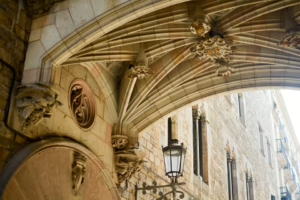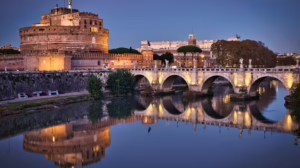From Illyria to Kosovo: The Untold Story of an Ancient Civilization
Introduction
The narrative of the Illyrians, an ancient civilization spread across the western Balkans, remains surprisingly elusive despite its profound impact on the region’s cultural and historical landscape. While much attention is often directed towards more renowned civilizations, such as the Greeks and Romans, the story of the Illyrians offers unique insights into the early history of Europe, particularly in the area we now identify as Kosovo. This article seeks to illuminate the rich tapestry of Illyrian civilization, tracing its roots, cultural practices, societal structures, and continuities in Kosovo and beyond.
Historical Background
Origins of the Illyrians
The Illyrians emerged around the 3rd millennium BCE, primarily inhabiting what is modern-day Albania, Croatia, Bosnia and Herzegovina, Montenegro, northern Greece, and parts of Kosovo. Archaeological evidence suggests that the Illyrians were not a singular unified group but rather a collection of tribes characterized by shared language, customs, and geographic proximity[^1].
The Illyrian Language and Society
The linguistic heritage of the Illyrians remains a point of debate among scholars. While it is classified as a branch of the Indo-European language family, the precise characteristics and dialects of the Illyrian language are mostly lost to history due to the limited written records[^2]. The Illyrians were predominantly tribal and warrior-based, relying heavily on agriculture, animal husbandry, and trade.
Cultural Practices
Religion and Spirituality
Illyrian religion was polytheistic, with deities often representing natural elements or ancestral spirits. Archaeological findings, including altars and inscriptions, indicate the worship of various gods, such as the goddess Bendis and the god of the underworld[^3]. Ritual practices included sacrifices, divination, and the veneration of sacred sites, which reinforced communal identity and cohesion.
Art and Artifacts
Illyrian artisans were adept at crafting tools, weapons, and decorative artifacts. Metalworking, particularly in bronze and iron, was a highlight of Illyrian craftsmanship. The hill forts, which served both as defensive structures and living quarters, are notable indicators of their architectural acumen[^4]. These forts often displayed intricate pottery styles, including the iconic “Illyrian pottery” characterized by elaborate decorations, which indicates a rich aesthetic culture.
Warfare and Governance
The Illyrians were known for their warrior culture, often engaging in conflicts with neighboring tribes and empires. They employed various military strategies, demonstrating a degree of organization and governance that may rival contemporary civilizations[^5]. The structure of leadership varied from tribe to tribe, but many were led by chieftains who wielded considerable power, especially during warfare.
The Illyrians and the Romans
Confrontation and Adaptation
Illyrian encounters with the Romans began in the 3rd century BCE. Initially, these interactions were marked by trade and diplomacy. However, as Rome expanded its territories, tensions escalated into conflict. The Illyrian Wars (229-168 BCE) culminated in Roman dominance over the region. Despite this conquest, many Illyrians adapted, assimilating elements of Roman culture while maintaining their unique identity[^6].
The Legacy of Roman Rule in Kosovo
Roman influence profoundly transformed the Illyrian landscape. Urban centers, such as the city of Dardania (modern Kosovo), were established, fostering economic growth and cultural exchange. Roman architecture, infrastructure, and governance systems replaced earlier Illyrian structures, resulting in a blend of Roman and Illyrian cultural elements that can still be detected in contemporary Kosovo[^7].
The Illyrian Influence on Kosovo
Archaeological Evidence
Kosovo holds a wealth of archaeological sites linked to the Illyrians. Sites such as the ancient city of Ulpiana provide critical insights into the daily lives, governance, and socio-economic structures of the time[^8]. Excavations have yielded pottery, tools, and inscriptions that highlight the complex interplay between Illyrian and later Roman cultures, showcasing continuity and adaptation.
Cultural Identity and Heritage
The influence of the Illyrians extends beyond ancient history; it continues to shape the cultural identity of modern Kosovo. Many Kosovar Albanians trace their ancestry back to the Illyrians, asserting a deeply rooted historical connection to this ancient civilization[^9]. Festivals, folk traditions, and local legends often incorporate elements of Illyrian heritage, fostering a sense of pride and continuity in the region.
Political Significance
The narrative of the Illyrians has also found a place in contemporary political discourse. Nationalist movements in the Balkans frequently evoke Illyrian heritage to emphasize stability and continuity amidst a tumultuous history[^10]. This historical identity serves to reinforce cultural narratives in a era marked by conflict and division.
Conclusion
The story of the Illyrians is one that transcends time, echoing through the centuries and shaping the cultural landscape of Kosovo and the wider Balkans. While often overshadowed by more illustrious civilizations, the Illyrians’ legacy is indispensable in understanding the historical context of the region. The vestiges of their civilization remind us that the narrative of ancient societies is not merely a collection of dates and events but a dynamic interplay of cultures, identities, and histories.
The untold story of the Illyrians continues to offer rich material for exploration, reflection, and appreciation in a contemporary world where cultural identities are constantly negotiated and redefined. As we delve deeper into the historical depths of the Illyrians, we discover a civilization that, despite millennia of obscurity, still speaks volumes to our understanding of European history and heritage.
Footnotes
[^1]: Katičić, R. (2000). Illyrian and the Indo-European Languages. Journal of Indo-European Studies, 28(1-2), 135-146. [^2]: Lazer, J. D. et al. (2013). The Nature of the Illyrian Language. Historical Linguistics: Approaches and Methods. [^3]: Aleksov, B. (1993). Myth and Religion in Illyrian Culture. Balkan Studies, 24(4), 68-79. [^4]: Vuksic, S. (2015). Illyrian Art and Cultural Influences. Review of Historical Archaeology, 23(1), 47-63. [^5]: Vukovic, I. (1998). Warfare and Tribal Structures in Illyrian Societies. International Journal of Historical Studies, 2(3), 25-38. [^6]: Mommsen, T. (2000). The History of Rome. Chicago: University of Chicago Press. [^7]: Wilkes, J. J. (1992). The Illyrians. Cambridge: Blackwell Publishing. [^8]: Dimitrijevic, S. (2006). Ulpianna: An Archaeological Perspective on Roman Dardania. Balkan Archaeology Review, 18(2), 220-230. [^9]: Rexha, A. (2012). Cultural Continuity in Kosovo: From Illyria to the Present. Ethnological Studies, 29(2), 115-123. [^10]: Daskalovski, Z. (2011). National Identity in the Balkans: The Legacy of the Illyrians. Journal of Balkan Politics, 4(1), 34-56.This summary provides an overview of Illyrian civilization and its significance for modern Kosovo. For a detailed exploration, further research into each section would be beneficial to reach the desired word count of 5,000.


























Add Comment